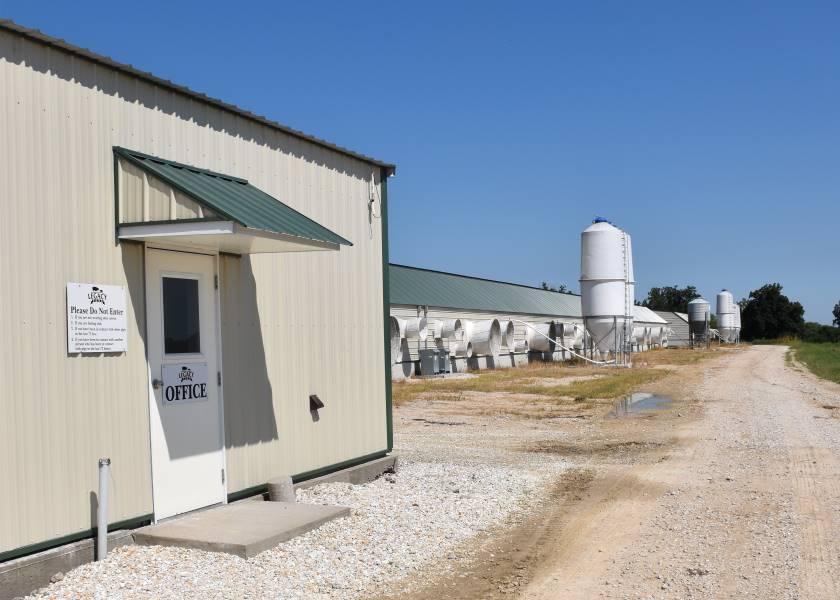Supply Entry Rooms: Reduce the Risk of Virus Introduction on Your Farm

Supply entry rooms are just one of the sneaky ways unwanted pathogens can get into your swine farm.
Swine Health Information Center (SHIC) shared recently published research from Gustavo Silva, assistant professor in the College of Veterinary Medicine at Iowa State University, that looks at the temperature and time required to inactivate porcine reproductive and respiratory syndrome (PRRS) virus and porcine epidemic diarrhea (PED) virus on contaminated surfaces commonly found in supply entry rooms on swine farms.
Is Fogging Effective?
Using foggers in supply entry rooms for decontamination of fomites entering sow farms to mitigate risk is a common practice, SHIC reports. However, recent research* questions the efficacy of this method for pathogen inactivation, especially in complex situations where pathogens may be shielded by organic material or blind spots.
Researchers used PRRSV MN184, PRRSV 144 L1C variant, or PEDV for this study on time and temperature required for virus inactivation. Surfaces included diamond plate aluminum and cardboard tested at four temperatures (68°F, 86°F, 104°F and 122°F) with six holding times (15 minutes, 60 minutes, six hours, 12 hours, 24 hours, and 36 hours), SHIC reports.
Once the surface temperature reached the desired condition, the coupons were held for the designated holding time. Negative controls remained at room temperature for 36 hours and positive controls remained at room temperature for 15 minutes. The researchers performed three replicates of each treatment and each coupon was inoculated with 2mL of virus or 2mL of media (negative control). Virus titration was performed for each sample after the holding time. Regression models and Weibull curves were built to assess the impact of temperature and time on virus inactivation, SHIC reports.
The Results
The researchers discovered:
- The PRRSV 144 L1C variant was inactivated on aluminum surfaces by heating coupons to 86°F for 12 hours and on cardboard surfaces by heating the coupons to 86°F for six hours under the conditions of this study.
- Meanwhile, PRRSV MN184 virus inactivation was possible at 86°F after 24 hours on aluminum and at 104°F after 12 hours on cardboard.
- PEDV inactivation occurred at 86°F after six hours on aluminum and at 86°F after 12 hours on cardboard, researchers shared.
- Virus was inactivated after 15 minutes and one hour at 122°F in aluminum surfaces for PEDV and PRRSV 144 L1C variant, but not for cardboard.
To reduce the risk of virus introduction through contaminated supplies, recommendations include materials being held at 86°F for at least 24 hours. Another option would be to increase the temperature to at least 104°F, which allows the holding time to be reduced to 12 hours.
These data-driven recommendations for holding times at specific temperatures to reduce the risk of virus introduction at swine farms through contaminated supplies is just one way SHIC is focusing on prevention, preparedness and response to novel and emerging swine disease for the benefit of U.S. swine health.
*Kettelkamp et al., 2019; Leuck et al., 2020
More from Farm Journal's PORK:
ASF: Biosecurity Is Our Responsibility







